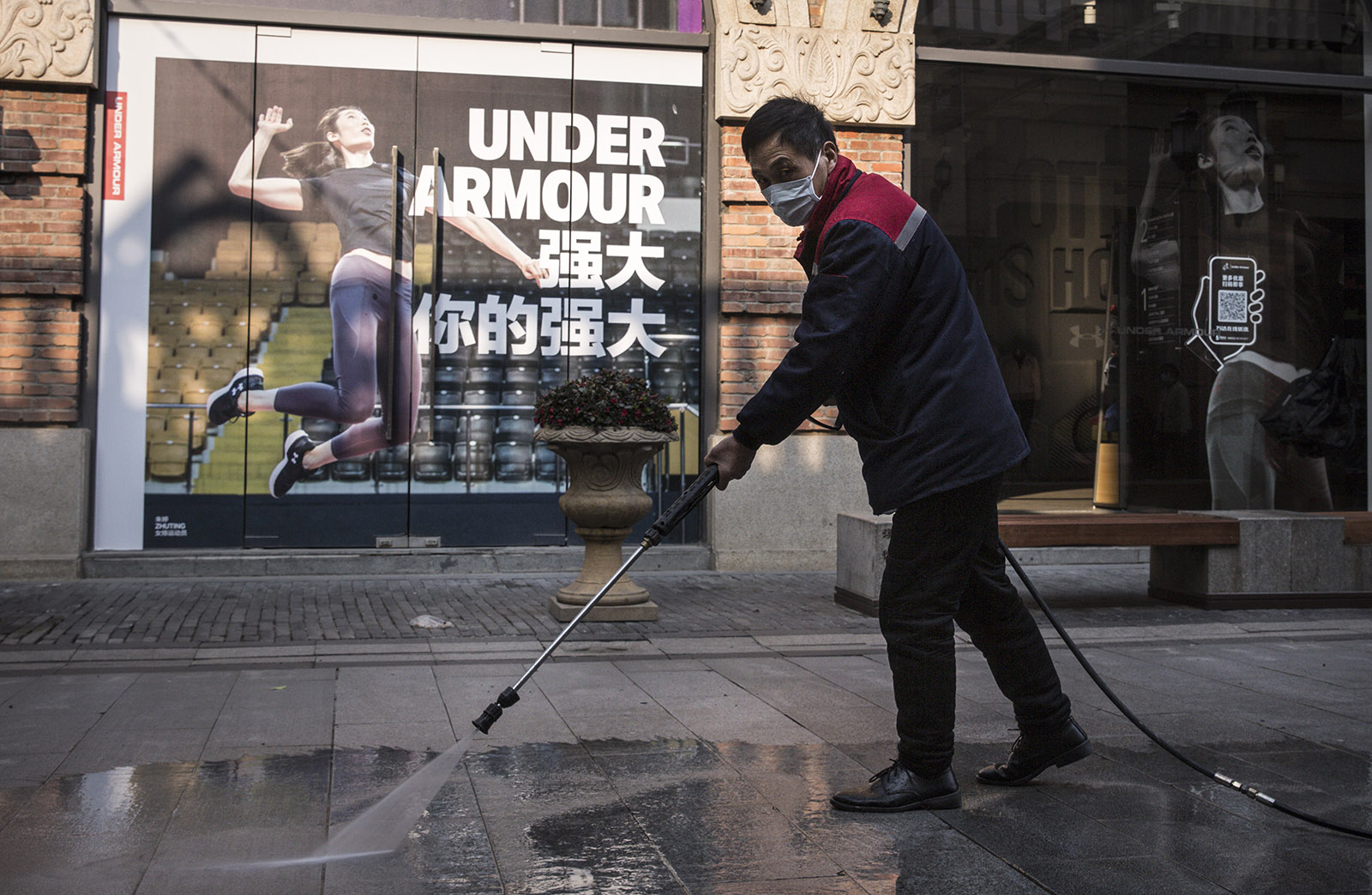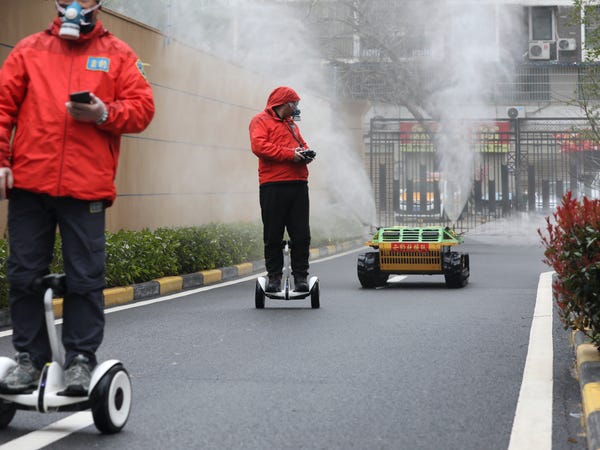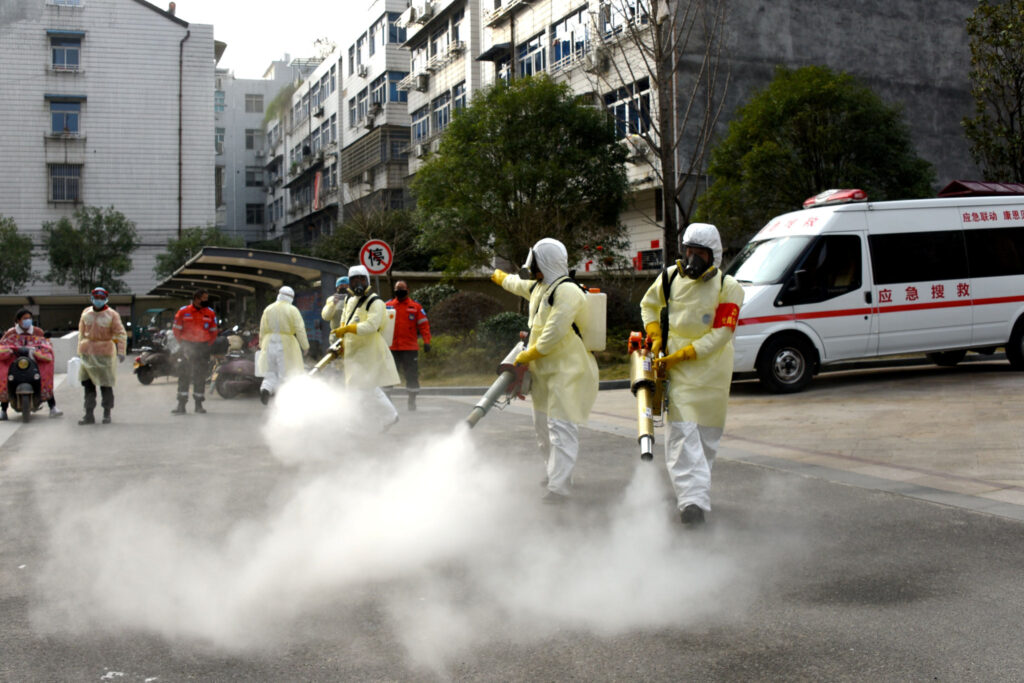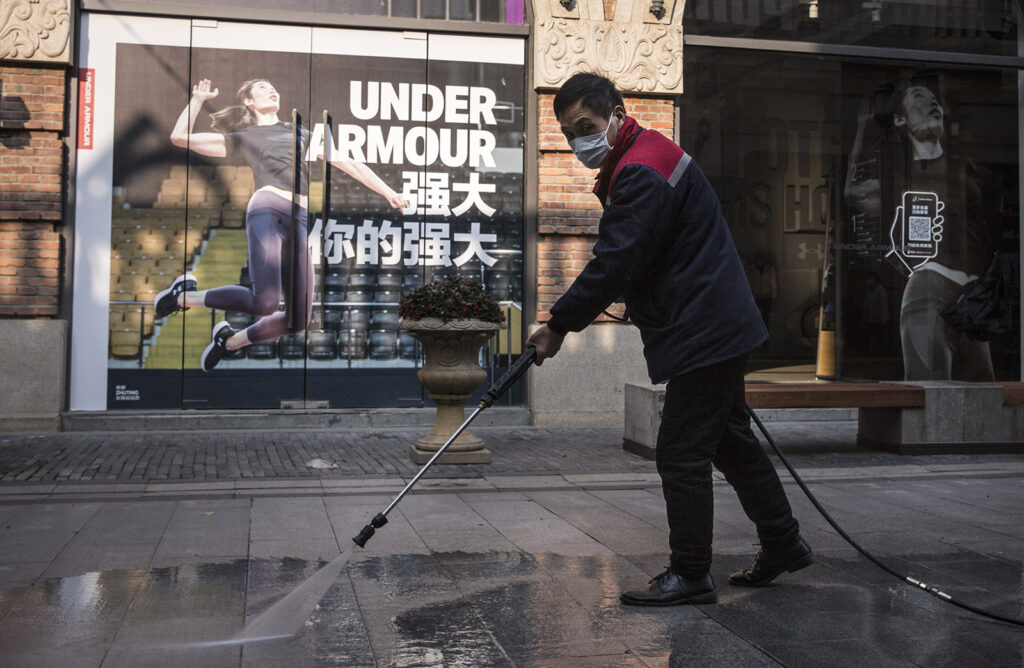
People’s Daily, a Chinese newspaper posted a video online of workers disinfecting the city of Wuhan, the epicenter of the coronavirus outbreak that has spread across the globe. (Futurism)
A report by Business Insider suggests the material they’re using to sanitize their streets could be a low concentration bleach-and-water solution. Spraying disinfectant solutions into the air is probably not an effective way to kill the virus, but wiping down highly touched surfaces is, according to Business Insider. The outlet claims misting sanitizer into the air or on the street is likely ineffective, because the virus isn’t airborne and people don’t touch the street that often.
But, Americans like myself are starting to wonder why we haven’t at least tried this approach in the States. Experts say the coronavirus mainly travels person to person through saliva and mucus droplets, not through tiny particles in the air. So why not sanitize city streets, parks, and commuting areas to help relieve these frequented areas from possible virus droplets?

In cities and towns across China, including Shanghai, Beijing, and Wuhan, sanitation workers have been sent to spray down all public areas. Even in parts of China, workers have been seen sanitizing money at local banks (The Atlantic). Russia, Nigeria, Iran, Iraq, Italy, Lebanon, South Korea, Georgia, London, Phillipines, and Turkey have issues out sanitation efforts in their cities that include disinfecting their public areas amid mandated quarantines.
While Scientists aren’t yet sure how long droplets of the virus can live on surfaces. According to the World Health Organization, “studies suggest that coronaviruses (including preliminary information on the COVID-19 virus) may persist on surfaces for a few hours or up to several days.”

In a March television broadcast by state CCTV in China, Zhang Liubo, a researcher with China’s Center for Disease Control and Prevention, warned the public that, “Outdoor surfaces, such as roads, squares, lawns, should not be sprayed with disinfectants repeatedly. … Spraying disinfectants over a large area and repeatedly may cause environmental pollution and should be avoided.”
According to Vox, Washington, DC’s, Metro system launched its pandemic task force in late February (weeks before the World Health Organization classified the coronavirus as a pandemic); New York City’s transit agency has been sending disinfectant teams out on its trains and buses to issue out deep cleanings every 72 hours. Typically, MTA vehicles undergo a thorough disinfectant process about five times a year. Meanwhile, San Francisco’s rapid transit system promised to isolate and disinfect a train car if it was visited by a person suspected or confirmed to have the coronavirus.

Hmmmmm, I don’t know but it seems like The U.S.A. has a more nonchalant approach to disinfecting our major cities unlike other major cities around the world.
The U.S.A. currently has the largest number of confirmed coronavirus cases in the world (356,414 with over 10,000 deaths). Let’s look at America’s confirmed cases compared to the other cities that have issued out sanitation efforts, courtesy of Worldometer.

From the looks of the data, it appears the USA is trumping other countries with COVID-19 claiming more victims in the Stares than any other country in the world.
Now, no one knows if the disinfecting efforts in the 11 major cities are why their cases are drastically lower in comparison to the USA. But, we can say that while these 11 cities have remained in quarantine, they have sanitized their public areas and their coronavirus cases are significantly lower than that of the USA where hardly any sanitation efforts have taken place.


